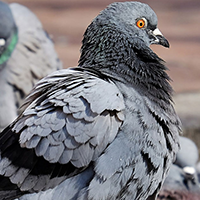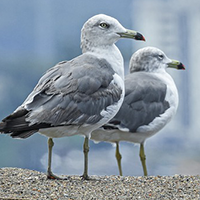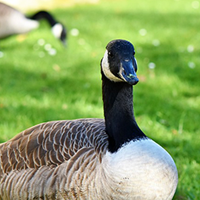
Hawkeye Bird and Animal Control specializes in bird and wildlife control, both residential and commercial. We use birds of prey in our work; we also protect and rehabilitate birds of prey.

Good News!
After much searching, we were able to find a new insurer and secure a significantly lower rate. We are delighted to pass on those savings to you - resulting in an almost 25% reduction on our daily rates. In an age of inflation and steady increases in just about every area of life - this is a bit of good news, indeed!
Osprey Nest Removal
In recent years Tower Control is becoming a more important aspect of our work. Utility, communications, or transmission towers make perfect nesting perches for various birds of prey. This can make it quite difficult for companies to get work done on the towers and can also cause a safety issue for anyone trying to go anywhere near the nests. Hawkeye’s knowledge of birds of prey in the area helps eliminate those risks. Among the many species of birds of prey in Ontario, the most common one is the Osprey. Osprey prefer to nest by lakes, and can often be seen on top of cell towers as well as Hydro poles. Osprey mate for life and lay about three eggs between April and May and often will continue to use the same nest or location year after year and just do “renovations” to the nest each year. They are quite protective of their nests and young.
Although highly discouraged, a nest may be removed if the nest or egg that is destroyed, taken, or possessed created a risk to the function of the electricity transmission or distribution line or to the telecommunications line or broadcast tower or to the maintenance of the tower. In a 2022 revision, the term 'risk' is defined by the client, not the ministry or service provider. The decision on whether the risk justifies nest intervention rests with you.
If there are young in the nest, they MUST be transfered immediately to a wildlife custodian - such as Hawkeye Bird & Animal Control.
How do we not only ensure the safety of these amazing birds of prey but also the workers that have to climb up into their territory to do a job?
Knowledge and a carefully thought-out plan. The process starts with analyzing the area, taking in all different information about the site; the type of birds around, how many there are, where the nest is compared to where the workers will be working, are there babies, if so... how old? We use our own drones to observe the nest and the state of the fledgling birds, etc. It is vital to answer these questions before anyone even attempts to climb the tower. Follow us along on such a job here »
We now have to pick the safest method to use to keep the birds away from the nest while the workers complete their tasks. This can take several hours.
All birds act differently once kept off the nest; some just fly off into a nearby tree, but when there are babies in the nest, they may hang around and fly in a circular pattern around the tower to keep an eye on their nest and babies. This behaviour is ok but means that we have to keep a close eye on how they are flying and almost “read” their body language to ensure everyone's safety.
Once completed, the best part of our job is watching the birds come back to the nest to make sure everything is as they left it, and then settle in. It is the acknowledgment of a job well done.
About Osprey nesting
The annual arrival date for Osprey in the Great Lakes Province of Ontario is March 23-27. Heavy nesting season begins April 12th and may extend to April 18th. With incubation for 30-40 days, chicks hatch May 15th-18th, May 25th at the very latest (this is the latest date ever reported in Ontario). Chicks fledge in Mid-July when they are about 2 months old, however they remain close to the nesting site for another three weeks or so dependent on the parents for food.
The female will lay 1-4 eggs and incubate the eggs until they hatch (36-42 days after hatching). After the eggs hatch, the male is the sole provider of food for the family. After approximately 2 months, the offspring can fly.
Fledgling bird:
All birds are considered to have fledged when the feathers and wing muscles are sufficiently developed for flight. A young bird that has recently fledged but is still dependent upon parental care and feeding is called a fledgling. In Ontario, young Osprey have fledged between July 15th and July 25th, depending on geograhical location (chicks will fledge later if farther north).
Hawkeye Bird and Animal Control continues to create ways to allow co-existing of wildlife and technology through safe management.
Related Articles: https://www.hawkeye.ca/bird-control-job-studies/red-tail-hawk-nest-relocation
















